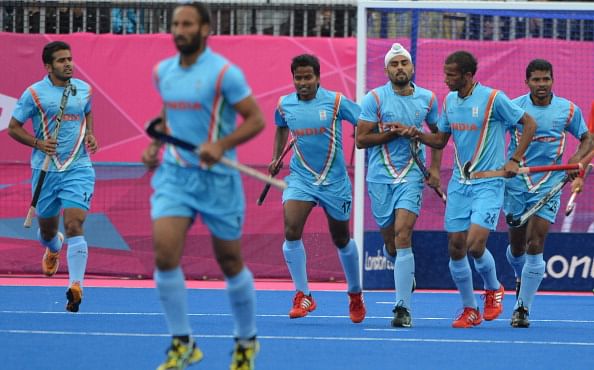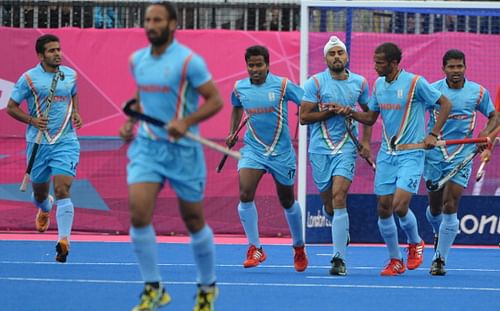
Indian hockey: an obsession with playing style

Is playing style alone the reason for India’s dismal hockey performances over the years?
Before we examine the effect of India’s playing style on its performances, we should examine the interview of the outgoing coach of the Indian national team, Michael Nobbs.
Coach Michael Nobbs is spot on when, in an interview with Chander Shekhar Luthra, DNA, he says that it will be a total disaster if we go back to playing the traditional Indian style, advocated by old Indian hockey players.
Michael Nobbs —“It’s simply the system here. India has had 30 years to fix these problems. What has the results been in last 30 years. Is there anything to be excited about?”
“I am hopeful we will be able to do well by the next Olympic Games,” he added.
Does that mean India will have to wait till the 2020 Olympics to produce good results?
“Not really, if we follow the programme we laid down in last two years. But the HI and public have accepted Oltmans’s statement. Are you all ready to give him that much time? Remember, you (HI and SAI) all employed him for that only,” said Nobbs sarcastically.
The change in coach may well bring in the change of style in Indian hockey. But Nobbs is convinced that India cannot think of going back to the subcontinental style of hockey (5-3-2-1) because it could be disastrous.
“I think making the team play the Indian style of attacking hockey would be a disaster. We’ve been losing by narrow margins recently against world’s top teams. If we play with Indian style, we will be murdered 10-0 or even worse. We should be adopting Australian or Dutch style (read European style) in order to progress,” said Nobbs.
Misadventure started two years back
As mentioned in my previous article, the die was cast when the decision was made to play a more attacking Indian/Australian style hockey. A gullible, inexperienced but willing coach was hired 2 years back.
How much was his knowledge about the Indian conditions? How much did he review the tapes? Did he consult with the previous coach, Jose Brasa (under whose tutelage the team had really improved by playing a European blend of scientific hockey)?
Did he really draft his players or was he saddled with them (the omission of Vinay, Chikara, Ravipal & Mahadik & retention of “loyal” non performers like Gurbaj, Sandeep, Shivendra, Khandekar, besides many other “non-ready youngsters)?
Whose decision was it to inculcate youngsters and who decided that they were better than the ones that they replaced? How much leeway was he allowed in correcting things, once he realized things were not going right? What was the role of Hockey India, and the influence peddling Punjabi coterie, masquerading under the guise of “development of hockey committee”, the sinister games of the selection committee of the so-called ‘past Olympians’? Only he and God alone know.
Role of the journos
The journalists, in their columns, are instrumental in raising controversy – foreign coach vs Indian, different playing styles, discarded player laments, youngsters vs seniors, administrative fights, IHF versus Hockey India, court battles, et al.
Many of them have been writing on hockey and Indian hockey regularly and for many years. In the case of Mr. Thygarajan, it seems like nearly a century (I remember reading his articles on hockey in SportsStar in my teens, 40 years back). Yet, his constant comment has been “Indians have a great midfield.”
When the same midfield does not pan out to be what he says they are, he has no qualms about criticizing the overall performance, and changing the subject, yet makes no mention of the travails of “his exalted midfield”.
Moreover, he absolves himself of all responsibility of his false premise. If one has a great midfield, then naturally one would perform much better. And you can be wrong a few times, but your midfield cannot be great when the team is fighting all the time to avoid the wooden spoon. More is expected of a chronic writer of Indian hockey than this gentleman.
He’s a classic representative journo example of not knowing what is wrong with Indian hockey; not knowing where it stands. They are seeing the same things on TV or on the field as everybody else, both the winning and losing outfits. Yet, they do not have any analytical skills to determine what it is they are seeing, what works and what doesn’t.
Hence the constant publishing and seeking of comments from others. The same old Olympians viciously attack each other via poor journalists like Burkha Dutt and programs like ‘The Buck Stops Here’. Pargat Singh, Zafar Iqbal, Ashok Kumar, Balbir Singh, Viren etc. come to our mind.
Have they really vetted these sources? As if Indian hockey is also the same as this TV tamasha, where opposing counterpoints i.e. fights (sole purpose is to add to TRP ratings) are expected to improve concepts and bring about improvements desperately needed to a game that is in the ICU. Since their own knowledge is defective, they rely on others whose knowledge is even more defective. Is it not right that if an expert’s opinion is wrong all the time, he cannot be called an expert any more, and that he not be in your column any more with his quotes?
Is it not necessary to make sure that the source you have is a reliable source? Or is being an Olympian the only criteria? What about coaching experience, analytical skills, talent gauging abilities, and knowledge of strategies? Is there no journalistic honesty to be correct in what is being reported on the column?
So a penchant for TRP ratings, and really no interest in helping the field that they write about, that gives them succor and sustains their job, is the biggest problem of the hockey journalists.